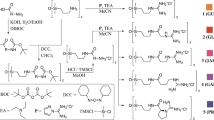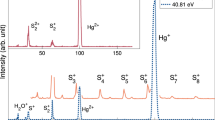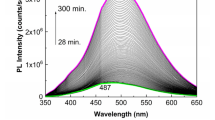Abstract
IN continuation of earlier work1 we have investigated the absorption spectrum of inorganic sulphates and of ammonium nitrate in the vapour state. The same method was employed, but that the SO2 bands were used as indicator of decomposition of the sulphates. The observed maxima of selective absorption are as follows (in m): H2SO4 262, K2SO4 258, Ag2SO4 265, and ZnSO4 269. The red wave limits are 285, 293, 300 and 294 m respectively.
This is a preview of subscription content, access via your institution
Access options
Subscribe to this journal
Receive 51 print issues and online access
$199.00 per year
only $3.90 per issue
Buy this article
- Purchase on Springer Link
- Instant access to full article PDF
Prices may be subject to local taxes which are calculated during checkout
Similar content being viewed by others
References
NATURE, 137, 496 (1936).
S. M. Karim and R. Samuel, Proc. Ind. Acad. Sci. (Bangalore), 1, 398 (1934).
Author information
Authors and Affiliations
Rights and permissions
About this article
Cite this article
HAQ, M., SAMUEL, R. Absorption Spectra and Linkage of Inorganic Salts in the Vapour State. Nature 137, 907–908 (1936). https://doi.org/10.1038/137907b0
Published:
Issue Date:
DOI: https://doi.org/10.1038/137907b0
Comments
By submitting a comment you agree to abide by our Terms and Community Guidelines. If you find something abusive or that does not comply with our terms or guidelines please flag it as inappropriate.



